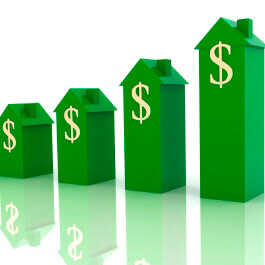Rising Home Prices and Real Estate Investment

Home Prices are on the Rise: What Does This Mean for Investors?
Signs of a housing recovery are evident, even if they are shaky at times. One of these signs is steadily rising home prices.
Home prices rose almost across the board in the US, increasing a full 12.8 percent in 20 cities from August 2012 to August 2013, according to the S&P/Case-Shiller property price index. This gain was higher than anticipated, and gave economists, investors and homeowners hope for a much-needed rebound.
It isn’t all smooth sailing, however. Prices have only risen to mid-2004 rates, and are not even close to pre-recession rates. What’s more, gains slowed in July, dropping from a 1.8 percent month-to month increase from June to July to a 1.3 percent increase from July to August.
So what do these facts mean for the investor?
First and foremost, they mean now is a good time to buy. Rising prices, erratic interest rates, lower inventory, weak job growth, and residual fears of tightened financing from the recession and have made a number of potential homebuyers and investors leery of sinking money into a home. This means that there is more of a selection for those brave enough to jump into the market, more incentive opportunities from motivated builders and motivated sellers, and more opportunities for higher profit, in part thanks to still-low interest rates.
Rising home prices mean that fewer numbers of homeowners are underwater on their mortgages, which in turn means fewer foreclosures. This makes it harder for flippers to find properties to turn around quickly for profit. In addition, flipping in a market of lukewarm buyers can mean high carryover costs if a property doesn’t sell right away. However, if you’re willing to search for foreclosures, willing to take the risk of waiting for a sale, flipping might very well be worth the trouble; increasing home pricing has caused the average gross profit on flipped homes to rise 12 percent since the last quarter of 2012.
While even short term investors can see modest profit in a climate of steady price increases, rising prices make the current market best for long-term buy-and-hold investors who are willing to wait until median prices stabilize at higher rates, and until investors and homebuyers gain more confidence in the housing market. Steady price gains and low (for now) interest rates also make this a good market for reverse wholesaling. Investors are doing some serious bargain hunting, and if you can do the legwork to find the properties they’re looking for, you can earn yourself some long-term clients, at minimal risk.